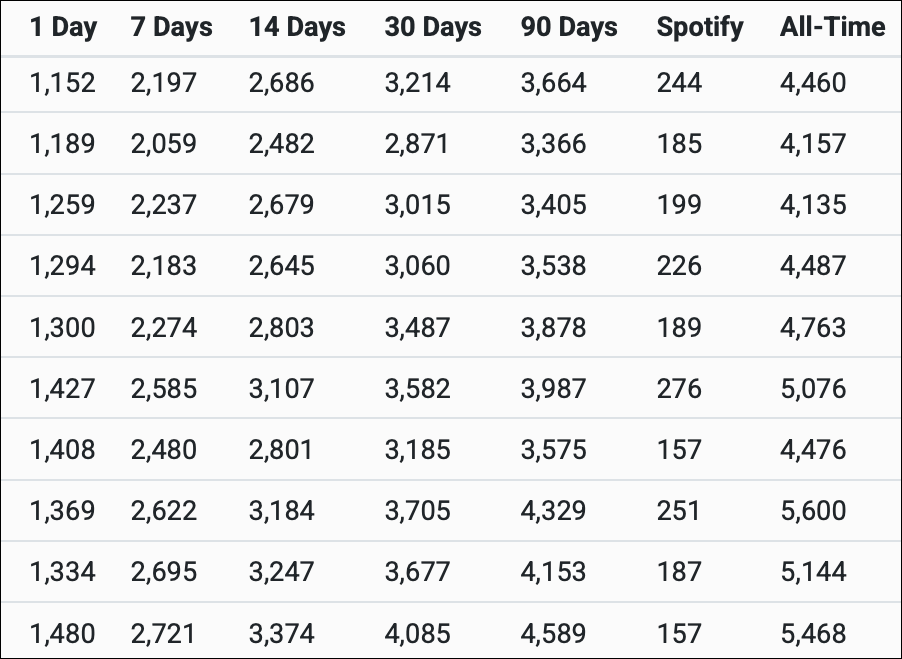Podcast Sponsorship 101: Attracting and Working with Sponsors
Podcasts of all sizes can find sponsors whose products or services fit with their topics.
You may have started your podcast as a hobby, or as a trial balloon to see if you could branch out into audio or video content as part of your work. At a certain point, as your listeners increase, it's worth considering whether you should look for sponsors. You won't make a lot of money from podcast sponsorship unless you've got a high number of listeners, but even smaller podcasts can earn enough to cover their hosting costs, and perhaps a bit more.
Let's look at when you should start looking for sponsors, how to find them, and how to work with them.
When is your podcast big enough to attract sponsors?
Podcasting is an interesting medium. While magazines and newspapers need to sell tens or hundreds of thousands of copies to be viable, podcasts can just reach a few hundred or a few thousand listeners and be attractive to sponsors. Not big brands, such as soft drink or smartphone companies, but if your podcast focuses on a niche topic, it may be exactly what small brands are looking for.
Let's say that your podcast is about fly tying (making your own flies for fly fishing), orchid breeding, or the history of your town. None of these topics is likely to be in the top charts on Apple Podcasts, YouTube, or Spotify, but the people who listen to them are passionate about the topic. Approaching sponsors for the sort of podcast, even if it has just 1,000 listeners, makes sense. You won't be able to ask for a lot of money, but, since most of the listeners to the podcast are potential customers for the sponsor, you could get a couple of hundred dollars per episode.
When you reach about 5,000 downloads per episode, then you have other options. There are sponsorship marketplaces that act as matchmakers between advertisers and podcasters, saving you the legwork, but taking a cut. A few such marketplaces are Audacy, BuySellAds, and PodRoll. And when you hit bigger numbers, you may consider hiring someone to handle marketing.
Preparing a press kit
It's a good idea to prepare a press kit if you're looking for sponsors, even if you're podcast is niche. This should include:
- Basic information: The podcast's name, the number of episodes and length of time it's been running, its tagline, artwork, and website.
- Metrics about the podcast: The average number of downloads per episode, but also highlight episodes that got more downloads than average.
- Demographics: Where your listeners are. This is important, as most sponsors only care about countries where they are present. You can use Fireside's detailed analytics to show potential sponsors both metrics and demographics.
- Guests: Highlight notable guests who have been on your podcast; their reputations can help give your podcast credibility.
- Social media: If your podcast has active social media accounts, include these so sponsors can see the interaction with listeners.
- Rate card: If you've been seeking sponsorships for a while and have established a rate card, this is essential.
How to run ads in your podcast
There are three locations in your podcast where ads can be presented:
- Pre-roll ad: This is a brief ad at the beginning of the podcast. For many small podcasts, this may simply be a mention, such as "This podcast is brought to you by X," during the intro, or it can be a teaser for the mid-roll ad.
- Mid-roll ad: This is generally the main ad, and is played around the middle of the podcast. Mid-roll ads are usually around 60 seconds, and are best read by one of the hosts. Sometimes, you can read these live when recording, but it may be easier to cut the ad separately and put a soft music bed underneath it, so it doesn't sound like the main content. If your podcast is long enough - say 45 minutes or longer - you may have two mid-roll ads.
- Post-roll ad: At the end of the episode, a lot of people switch away, so an ad at this point isn't useful. It's good to remind listeners of the sponsor, but don't expect them to listen to a full ad.
For the main ad read, you should either have the sponsor give you the text to read - and edit it, as needed, to fit with your style - or write the ad and submit it to the sponsor for approval.
Dynamic ads are a type of ad that is inserted into the podcast by its hosting company. These ads may not have anything to do with the topic of the podcast, and often sound like radio ads. If your podcast is big enough that you can charge decent rates, and you don't want to bother with ad reads, this might be an option. However, dynamic ads may turn listeners off because they can be intrusive.
Follow up
After you've released sponsored episodes, you should send the sponsor a link to the episode. However, don't be in too much of a hurry to give them metrics; the first day, or even the first week of downloads, doesn't represent the life of an episode. If you check your podcast metrics, you may see that episodes continue to attract listeners months after they are released.
This is an important argument to use with sponsors: if your metrics show that your podcast has a long tail, then a sponsor's ad will be heard for that longer period. Here's an example of a podcast hosted on Fireside, showing metrics for episodes about a year ago:

As you can see, the all-time download numbers are about twice those of the first 90 days. Not all podcasts have this sort of long tail, but many do, if their topics are not timely.
Not all podcasters want sponsors; many produce podcasts as a way of discussing a hobby or interest. Getting sponsors can help defray costs and provide a bit of a bonus, but podcasters who want to earn more need to devote time and effort to finding and cultivating sponsors.

